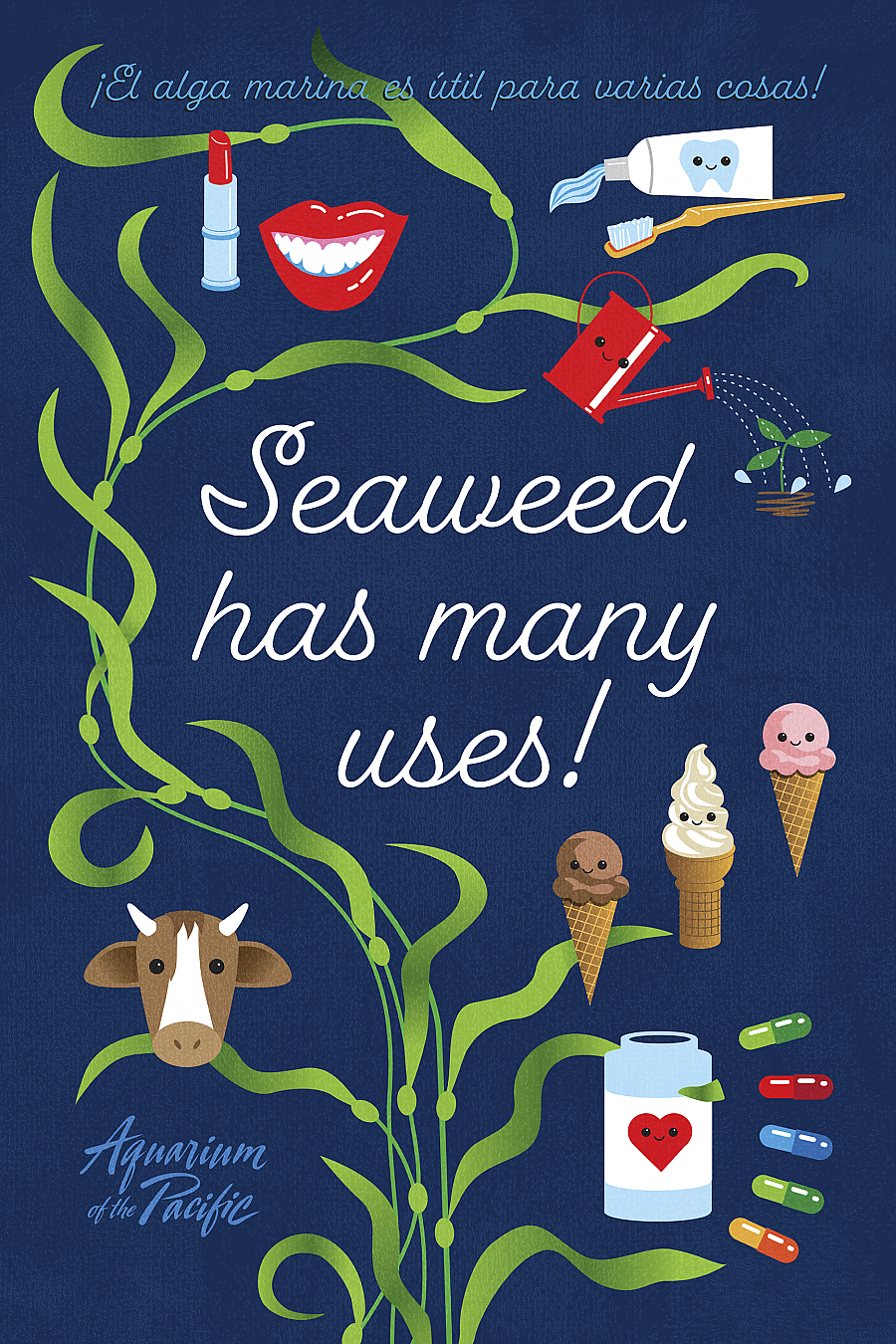Seaweed
Seaweed plays many important roles in coastal ecosystems. Seaweed provides food and habitat for other marine species, cleans coastal waters by removing excess nutrients from runoff, and absorbs carbon dioxide from the water which protects shelled animals (like oysters) from ocean acidification.

Credit: NOAA Fisheries
Come and learn more about seaweed at the Aquarium of the Pacific’s Baja Splash Festival on October 2 & 3, 2021!
Continue the seaweed learning festivities at the California Seaweed Festival or by visiting the Caracol Museo de Ciencias in Ensendada, Mexico (connect with Caracol on Instagram and Facebook).
Check out the video You can use seaweed for that?!
Aprende sobre las algas marinas en español: Las Algas Marinas

Credit: Brian Gray, Aquarium of the Pacific
Seaweed has a number of health benefits and can be found in a variety of foods
Seaweed is an excellent source of protein, fiber, and iron and other essential nutrients like Vitamin K and the healthy long-chain omega-3 fatty acids found in seafoods.
When you think of eating seaweed, you might be most familiar with seaweed wrapped around sushi rolls or as dried snacks. But it can be used for so many other delicious and nutritious dishes! Seaweed makes an excellent ingredient in salsa, soups, salads, kimchis, and slaws. It can also be found in pastas or used as seasoning for adding a umami flavor to chips and popcorn.
-
Learn more:
What is Kelp and Why Should I Eat It? (Seafood Nutrition Partnership)Recipes
Seaweed has many uses besides food!
You can find seaweed in ice creams (to keep the ice cream thick and prevent ice crystals from forming), cosmetics, pharmaceuticals, fertilizer, and animal feeds.
Seaweed can also be used to make biodegradable packaging, a great alternative to plastic packaging that contributes to pollution in our oceans.
Red seaweeds can be used in feeds for cows to help them reduce their methane emissions. Methane is a greenhouse gas that contributes to climate change.
-
Learn more:
Feeding Cattle Seaweed Reduces Their Greenhouse Gas Emissions 82 Percent (University of California, Davis)

Credit: Atlantic Sea Farms
Seaweed can be responsibly farmed to provide nutritious food and help support healthy ecosystems and combat climate change
Seafood produced through marine aquaculture, or seafood farming, helps support a sustainable food supply for the U.S. and the whole world. Seaweed farming emits far fewer greenhouse gas emissions than other sources of food production. It can also diversify how we grow nutritious food, helping to support a more consistent food supply when events like floods and fires impact food production on land. Seaweed does not require freshwater or land resources to grow, so those resources are available for wildlife and other ecosystem functions.
Restorative seaweed farming can help replenish natural populations and habitats. Seaweed are plants and algae that, like plants on land, need carbon dioxide to survive. Seaweed farms can absorb the excess carbon dioxide in the ocean, protecting shelled animals (like oysters) from ocean acidification. Seaweed farms can also be used as a tool to improve the quality of the water they grow in by absorbing nitrogen fertilizers from urban and agricultural runoff.
-
Learn more:
VIDEO: Ocean to Table: Maine - Ocean Approved (Seafood for the Future, Aquarium of the Pacific)

